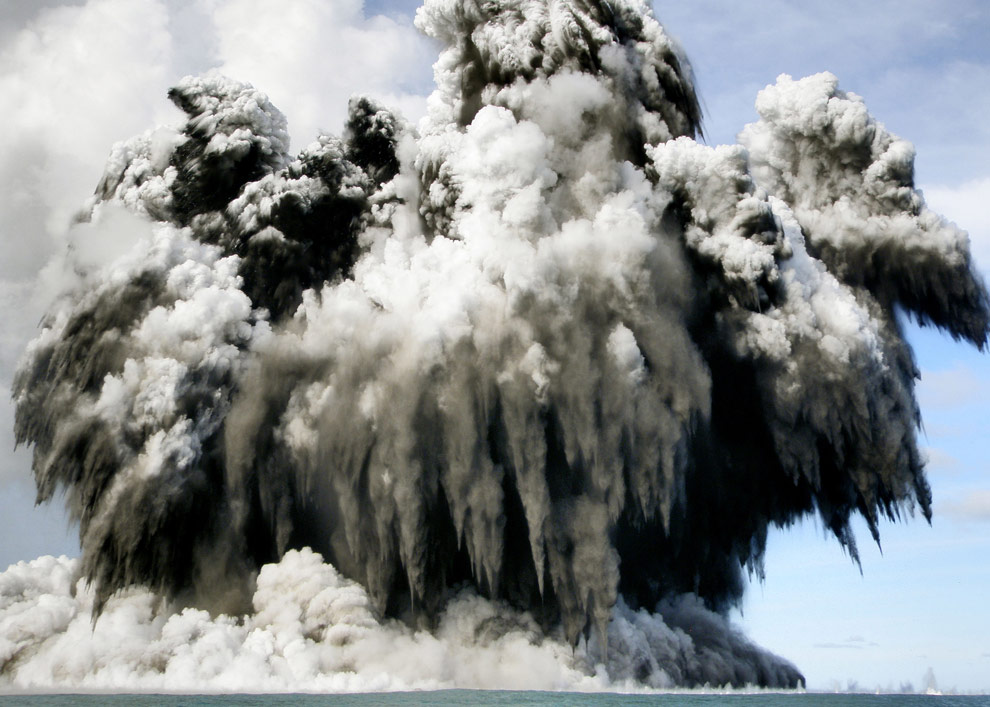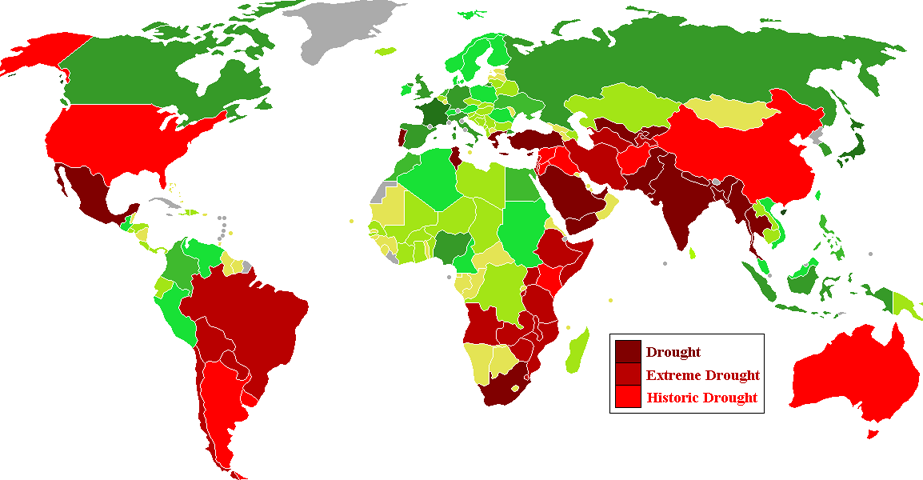
Undersea eruptions near Tonga - The Big Picture - Boston.com
This blog has been created, by Mr O'Callaghan to share Geography online resources and websites with the Geography students of Kingdown Community School Warminster Wiltshire.

The countries that make up two thirds of the world’s agricultural output are experiencing drought conditions. Whether you watch a video of the drought in China, Australia, Africa, South America, or the US, the scene will be the same: misery, ruined crop, and dying cattle.
China
The drought in Northern China, the worst in 50 years, is worsening, and summer harvest is now threatened. The area of affected crops has expanded to 161 million mu (was 141 million last week), and 4.37 million people and 2.1 million livestock are facing drinking water shortage. The scarcity of rain in some parts of the north and central provinces is the worst in recorded history.
The drought which started in November threatens over half the wheat crop in eight provinces - Hebei, Shanxi, Anhui, Jiangsu, Henan, Shandong, Shaanxi and Gansu.
Henan China's largest crop producing province, Henan, has issued the highest-level drought warning. Henan has received an average rainfall of 10.5 millimeters since November 2008, almost 80 percent less than in the same period in the previous years. The Henan drought, which began in November, is the most severe since 1951.
Anhui Province issued a red drought alert, with more than 60 percent of the crops north of the Huaihe River plagued by a major drought.
Shanxi Province was put on orange drought alert on Jan. 21, with one million people and 160,000 heads of livestock are facing water shortage.
Jiangsu province has already lost over one fifth of the wheat crops affected by drought. Local agricultural departments are diverting water from nearby rivers in an emergency effort to save the rest.
Hebei Over 100 million cubic meters of water has been channeled in from outside the province to fight Hebei’s drought.
Shaanxi 1.34 million acres of crops across the bone-dry Shanxi province are affected by the worsening drought.
Since last November, Shandong province has experienced 73 percent less rain than the same period in previous years, with little rainfall forecast for the future.
Relief efforts are under way. The Chinese government has allocated 86.7 billion yuan (about $12.69 billion) to drought-hit areas. Authorities have also resorted to cloud-seeding, and some areas received a sprinkling of rain after clouds were hit with 2,392 rockets and 409 cannon shells loaded with chemicals. However, there is a limit to what can be done in the face of such widespread water shortage.
As I have previously written, China is facing hyperinflation, and this record drought will make things worse. China produces 18% of the world's grain each year.
Australia has been experiencing an unrelenting drought since 2004, and 41 percent of Australia's agriculture continues to suffer from the worst drought in 117 years of record-keeping. The drought has been so severe that rivers stopped flowing, lakes turned toxic, and farmers abandoned their land in frustration:
A) The Murray River stopped flowing at its terminal point, and its mouth has closed up.
B) Australia’s lower lakes are evaporating, and they are now a meter (3.2 feet) below sea level. If these lakes evaporate any further, the soil and the mud system below the water is going to be exposed to the air. The mud will then acidify, releasing sulfuric acid and a whole range of heavy metals. After this occurs, those lower lake systems will essentially become a toxic swamp which will never be able to be recovered. The Australian government's only options to prevent this are to allow salt water in, creating a dead sea, or to pray for rain.
provides information on the following locations
The United States California Texas Augusta Region (Georgia, South Carolina, North Carolina) Florida
South America Argentina Brazil Paraguay Uruguay Bolivia Chile
Africa faces food shortages and famine. Kenya Tanzania Burundi Uganda South Africa
Middle East and Central Asia Iraq Syria Afghanistan Jordan
Google Image Result for http://www.greatdreams.com/climate/Countries_by_agricultural_drought.png
University of California at Berkeley physics grad student Robert Rohde used all available data from government sources to map 150 years’ worth of hurricane tracks through September 2005.

Map: Where Do the Nastiest Hurricanes Emerge? | Natural Disasters | DISCOVER Magazine